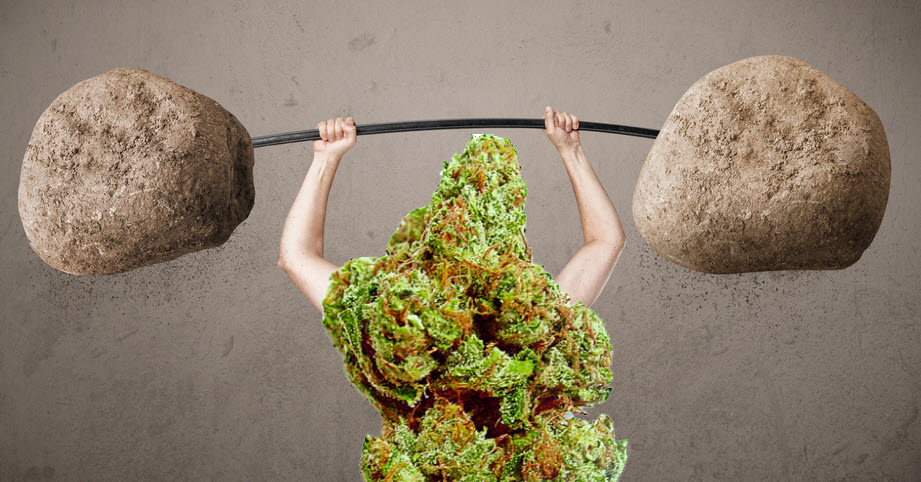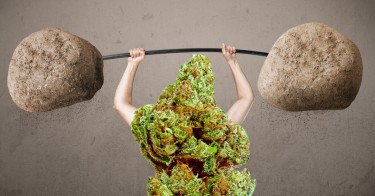Cannabis News
States to Start Reversing Marijuana Legalization?
Published
2 years agoon
By
admin
In a move that could severely impact Montana’s budding cannabis industry, Republican Senator Keith Regier has presented a bill that would effectively dismantle the state’s recreational sales program just over a year after its launch.
The proposed legislation, Senate Bill 546, aims to curb adult-use dispensaries by enforcing stringent restrictions that would limit not only medical marijuana allowances but also eliminate recreational sales, as reported by the Montana Free Press.
Senate Bill 546
The proposed Senate Bill 546 could bring about a significant shift in Montana’s marijuana marketplace, with its primary focus being dismantling adult-use dispensaries. However, that’s not all – the bill also seeks to increase the state tax on medical marijuana by a whopping 400% while enforcing strict limits on potency and possession amounts for medical use.
While non-medical marijuana sales are prohibited under the bill, it doesn’t make adult possession illegal. Moreover, the bill would reduce the number of mature plants that adults can grow at home by half, from two to just one.
Despite several requests for comment, Regier, the sponsor of SB 546, remained unresponsive at the time of this writing. However, if the bill passes into law, it could considerably impact Montana’s cannabis businesses, resulting in a significant reduction in potential consumers and state revenue. The industry has contributed over $54 million in tax revenue to state coffers since the start of adult-use sales in January 2022, with less than one-tenth of that amount coming from medical marijuana taxes. Currently, recreational customers pay a 20% state tax, and some counties levy an additional 3% local tax.
The sales data indicates that under SB 546, the cannabis industry would have contributed just over $20 million in tax revenue, less than half of what it has generated so far. However, the potential consequences of the bill extend far beyond monetary losses. According to the owner of Montana Canna, Zach Block, a dispensary in Kalispell, the proposed legislation would render the entire cannabis program meaningless for operators, patients, and consumers alike, delivering a substandard product to a small group of people while ignoring the needs of the majority. Block shared these concerns with MTFP.
SB 546 also includes several provisions that restrict the potency of marijuana products under the medical program. While the current law prohibits the sale of flowers with more than 35% THC, the proposed bill would lower that limit to just 10%. Additionally, the bill halves the amount of permissible THC in edible products, from 10 milligrams to just 5 milligrams. Concentrated marijuana extracts would also be required to contain no more than 10% THC.
In addition to limiting the potency of medical marijuana products, SB 546 also restricts the amount of marijuana a medical patient can purchase. While current law allows patients to buy up to five ounces per month or equivalent in other forms like edibles and tinctures, the proposed bill would reduce this limit to just one ounce.
Recreational Cannabis Legalization in Montana
Montana joined Arizona and New Jersey in approving a ballot measure legalizing recreational cannabis during the November 2020 election cycle. Montana is now among the 14 states that have legalized the use of recreational marijuana, with the governor’s office and both legislative chambers being controlled by Republicans. This political configuration puts the fate of cannabis-related legislation in the hands of the GOP.
While the state has made significant progress in establishing a thriving cannabis industry, with more than 130 dispensaries currently operating across Montana, the recent introduction of SB 546 has cast a shadow of uncertainty over the industry’s future.
In January 2020, marijuana activists affiliated with New Approach Montana took a significant step towards legalizing cannabis in Montana by submitting Montana I-190. This ballot initiative sought to legalize the use of recreational marijuana in the state. The initiative gained traction, and on August 13, the state Secretary of State confirmed that it had qualified for the November ballot, paving the way for voters to have their say on the issue.
On November 3, 2020, Montana residents went to the polls and voted on I-190, ultimately passing the ballot measure to legalize recreational cannabis in the state. The passage of I-190 marked a significant victory for marijuana advocates in Montana, who had been pushing for cannabis reform for many years. With the legalization of recreational cannabis, the state opened up new opportunities for cannabis businesses and entrepreneurs while providing greater access to cannabis products for adults who choose to use it.
As of January 1, 2021, individuals aged 21 or older can possess and utilize up to 28 grams, or one ounce, of marijuana. Nonetheless, consuming or holding the substance in public areas and specific specified locations remains prohibited, including federal lands and waters governed by federal law. This applies to both the recreational and medicinal use of marijuana.
Montana’s Medical Marijuana Program enables authorized providers to offer marijuana products to registered cardholders within the program. While cardholders can legally possess up to one ounce, or 28 grams, of marijuana, they are also permitted to purchase up to five ounces, or 140 grams, within 30 days. However, it is essential to note that distributing the substance to non-cardholders remains illegal.
Conclusion
Montana’s journey toward legalizing recreational marijuana has been a long and winding road. From the submission of the Montana I-190 ballot initiative to the passage of the bill in November 2020, the state has come a long way in terms of cannabis reform.
The passing of I-190 signaled a major shift in public opinion regarding marijuana use in Montana. It represented a significant milestone in the ongoing struggle for cannabis reform in the United States. While the introduction of SB 546 threatens to stifle the growth of the state’s cannabis industry, the progress made so far cannot be denied. It remains to be seen what the future holds for Montana’s cannabis industry, but one thing is for sure – the state’s residents have spoken.
The momentum toward legalizing recreational marijuana shows no signs of slowing down. As the debate over cannabis reform continues to rage across the country, Montana’s journey serves as a shining example of how change can be achieved through the power of the ballot box.
REVERSING CANNABIS MARKETS, READ ON…
You may like
Cannabis News
Republicans May Legalize Cannabis in America, Wait, What?
Published
2 days agoon
November 25, 2024By
admin

Keep on Pushing! I can see a Crack in the Wall…
As I sit here rolling up my morning joint, I can’t help but marvel at how far we’ve come in the cannabis legalization movement. What was once relegated to the shadows of society, demonized by decades of propaganda and prohibition, has emerged into the mainstream with such force that even the most ardent opponents are starting to change their tune.
You know something significant is happening when Republican senators start calling cannabis rescheduling “half-assed measures” and argue for full legalization. The winds of change are blowing, my friends, and they’re carrying the sweet scent of reform with them.
Look around – despite federal prohibition, 38 states have established medical cannabis programs, and nearly half allow adult recreational use. This isn’t just progress; it’s a revolution in slow motion. The dominoes are falling one by one, and the momentum seems unstoppable. Even in states where cannabis remains illegal, there’s growing pressure from constituents who’ve witnessed the sky decidedly not falling in neighboring legal states.
But here’s what really gets me excited: I’m starting to see cracks in the great wall of prohibition. These aren’t just surface fractures – we’re talking about deep, structural weaknesses in the foundation of cannabis prohibition itself. When both Democrats and Republicans start seriously discussing federal reform, albeit from different angles, you know we’re approaching a tipping point.
The time has come to double down on our efforts. Like water wearing away at stone, our persistent push for reform is finally showing results. The barriers that once seemed impenetrable are beginning to crumble, and the path to meaningful change is becoming clearer by the day.
So, let’s dive into what’s really happening in the corridors of power, examine the shifting political landscape, and explore why this might be our moment to push through to victory. The game is changing, folks, and we’re all front-row witnesses to history in the making.
For years, we cannabis advocates have operated under the assumption that Republicans were our sworn enemies in the fight for legalization. And let’s be honest, with dinosaurs like Senator Chuck Grassley still roaming the congressional halls, it’s not an entirely unfair assessment. However, something interesting has been happening over the past few years – support for cannabis reform has quietly been creeping across party lines.
Case in point: Senator Thom Tillis from North Carolina (not exactly a bastion of progressive drug policy) recently dropped a truth bomb that had me nearly dropping my bong in surprise. He called the current attempts at rescheduling cannabis and banking reform “half-measures—we could even argue half-assed measures.” Coming from a Republican senator, those words carry serious weight.
But Tillis didn’t stop there. He went on to argue that we’re “dancing around the issue” and need “one consistent framework” for cannabis regulation, similar to alcohol and tobacco. His vision includes authenticating crops, mandating proper FDA oversight of products, and allowing banking access. Holy smokes, folks – this is exactly what many of us have been preaching for years!
What makes Tillis’s position particularly interesting is how he frames it in terms that appeal to traditional Republican values: proper regulation, captured revenue through excise taxes, and dealing with “negative consequences” through a structured framework rather than prohibition. It’s like he’s reading from the cannabis advocate’s playbook, but translating it into Republican-speak.
And he’s not alone. We’re seeing more Republican lawmakers stepping up to support various aspects of cannabis reform. From Rep. Matt Gaetz’s vocal support for veterans’ access to medical cannabis to former Republican-turned-independent presidential candidate Vivek Ramaswamy’s calls for federal legalization, the tide is definitely turning.
The key here is that Republicans aren’t necessarily opposed to cannabis reform – they just need it packaged in a way that aligns with their political philosophy. Talk about states’ rights, proper regulation, economic opportunities, and tax revenue, and suddenly you’re speaking their language. Throw in some tough standards for quality control and age restrictions, and you’ve got yourself a conservative-friendly cannabis bill.
Is this the crack in the wall we’ve been waiting for? It’s certainly promising. When mainstream Republican senators start calling for comprehensive federal frameworks instead of piecemeal reforms, you know something’s shifting in Washington. But let’s not break out the celebration joints just yet – there’s still plenty of work to be done.
The wall of prohibition may be cracking, but it hasn’t fallen. What we need now is to keep pushing, keep advocating, and keep highlighting how sensible cannabis reform aligns with conservative principles of personal freedom, states’ rights, and regulated markets. The momentum is building, and with more Republicans like Tillis speaking out, that wall might just come tumbling down sooner than we think.
Remember folks, every crack starts small before it brings down the whole damn wall. Keep on pushing!
Have the Democrats turned into the Council of Karens?
Well, well, well… look who’s clutching their pearls over hemp-derived cannabinoids these days. The Democratic majority in the Senate Agriculture Committee just released their version of the Farm Bill, and folks, it reads like it was written by a committee of concerned suburban moms who just discovered their teenagers might be having fun.
Now, don’t get me wrong – there are some positive aspects to their proposals. They’re planning to remove background checks for industrial hemp farmers, which is fantastic. It’s about time we stopped treating hemp farmers like potential drug kingpins for growing what’s essentially an agricultural crop.
But here’s where things get Karen-level dramatic: they’re pushing for a “total THC” testing requirement that would effectively eliminate a whole range of products from the market. Jonathan Miller from the U.S. Hemp Roundtable hit the nail on the head when he said this move is “intended to eliminate a whole range of products” and could potentially “eliminate the whole hemp extract industry.”
Let’s be real here – this isn’t about safety. This is about control. Delta-8 THC and other hemp-derived cannabinoids have been legally available across the country, providing relief and enjoyment to countless adults who live in states where traditional cannabis remains prohibited. Has society collapsed? Have we seen an epidemic of hemp-derived cannabinoid emergencies? Nope and nope.
Instead of embracing the innovation and entrepreneurship that’s flourished under the 2018 Farm Bill, Democrats seem hell-bent on playing helicopter parent to the entire nation. “Oh no, people might be enjoying themselves with legal hemp products! Quick, someone write a regulation!”
The irony here is palpable. The same party that champions personal freedom when it comes to bodily autonomy suddenly transforms into a bunch of finger-wagging nannies when it comes to hemp-derived cannabinoids. They’re essentially trying to kill an entire industry that’s operating legally and serving millions of Americans who choose to use these products.
You have to wonder – is this why Democrats have been losing ground across the country? Have they become so disconnected from their base that they think people want more restrictions on their personal choices? While Republicans are starting to embrace cannabis reform (albeit slowly), Democrats are out here trying to restrict access to legal hemp products.
Look, if you’re worried about product safety, then regulate for safety. Create standards for testing, labeling, and manufacturing. But trying to eliminate an entire category of products because “someone might get high” is peak Karen behavior. “I’d like to speak to the manager of the hemp industry!”
Maybe it’s time for Democrats to step back, take a deep breath, and remember that they’re supposed to be the party of progress, not prohibition. Because right now, they’re starting to sound an awful lot like the Republicans they used to criticize.
Just saying… would you like to speak to my manager about it?
Then there’s RFK
Just when you thought politics couldn’t get any stranger, here comes Robert F. Kennedy Jr. potentially heading up the Department of Health and Human Services under Trump. Talk about a plot twist! And while nothing’s set in stone yet, this potential appointment has got me feeling cautiously optimistic about the future of drug policy reform.
Why? Because RFK Jr. isn’t your typical bureaucrat when it comes to cannabis and psychedelics. He’s openly advocated for making psychedelic drugs available “at least in therapeutic settings and maybe more generally.” That’s not exactly the kind of talk we’re used to hearing from potential HHS heads.
When it comes to cannabis, he’s been even more direct, supporting legalization and taxation, with the proceeds going toward creating “healing centers” for addiction recovery. He’s also backed making banking services available to the cannabis industry. As someone who would oversee agencies like the FDA, his progressive stance on these issues could be a game-changer.
Now, I know what you’re thinking – this is a Trump administration we’re talking about. But here’s where it gets interesting: along with RFK Jr., other Trump nominees like Matt Gaetz and Tulsi Gabbard have also expressed support for drug policy reform. It’s like we’ve stumbled into some bizarre alternate universe where a Republican administration might actually advance drug policy reform more effectively than their Democratic predecessors.
Of course, we need to keep our feet firmly planted in reality here. Nothing’s guaranteed, and campaign promises have a funny way of evaporating once people take office. But the mere possibility that we could see significant drug policy reform under a Republican administration, with RFK Jr. at the helm of HHS, is enough to make my head spin.
For now, we’ll have to wait and see how the political chips fall. But one thing’s for certain – the landscape of drug policy reform is shifting in ways none of us could have predicted. Stay tuned, folks. This could get interesting.
INSPIRATION:
The Crack in the Red Wall:
https://www.marijuanamoment.net/gop-senator-says-marijuana-banking-and-rescheduling
-are-half-assed-measures-arguing-cannabis-should-be-legally-regulated-like-alcohol-and-tobacco/
The Council of Karens
https://www.marijuanamoment.net/senate-democrats-proposed-
changes-to-federal-hemp-laws-could-eliminate-a-whole-range-of-products-industry-advocate-says/
Then there’s Kennedy
https://www.marijuanamoment.net/rfk-jr-could-advance-marijuana-
and-psychedelics-reform-agenda-as-trumps-top-health-official/
REPUBLICANS BLOCKING WEED OR NO? READ ON…
IS THERE A RED WALL IN AMERICA BLOCKING CANNABIS LEGALIZATION?
Cannabis News
A History of Cannabis Use in Different Cultures and Parts of the World
Published
2 days agoon
November 25, 2024By
admin

The discussion surrounding cannabis and its merits has become a global phenomenon. The United States seems a lot more open to the legalization of marijuana, with several states having already decriminalized or outright legalized the practice.
In Europe, the situation is much the same. There are several countries where marijuana is free to use, recreationally or for medical purposes. However, the question we’d like answered is this; for how long have humans been using cannabis, and what were the different reasons?
The Origins of Cannabis
It is difficult to say exactly which regions of the world cannabis is native to. Many scientists, botanists, and historians believe that the plant’s origins can be traced to Central Asia, particularly the regions of Mongolia and Siberia. Archeologists with a particular interest in these regions have discovered some evidence, suggesting that the plant was first cultivated and used over 12,000 years ago.
It is impossible to know what all of the uses for cannabis were during this time. It is only recently that most western nations have legalized the use and growing of cannabis. With modern tools to help home growth, we can start to uncover all of the different uses for the cannabis plant. However, it can be tough to determine what the uses were thousands of years ago.
Still, archeologists have managed to uncover at least some of the different uses. For example, we know that in the Altai Mountains of Central Asia, tribal and nomadic societies used the plant in a mourning ritual. Piles of cannabis would be placed on a grave, and then burned. The smoke might have been seen as the spirit of the departed being released.
Cannabis in Rituals
The use of cannabis in religious or spiritual rituals continued throughout history. Even today, many smokers claim that they’ve experienced “spiritual awakening” while partaking in marijuana usage. Though we know that Central Asian tribes used it in mourning, there is no evidence to suggest that they would inhale the smoke, in an attempt to get to some sort of religious epiphany.
The evidence of that being the case, however, comes from India, where cannabis played a role in a variety of religious rituals and practices. The Atharva Veda, a sacred Hindu text mentions “bhang” (the ancient Indian word for cannabis) as one of the five sacred plants, associated with the Hindu deity Shiva. India is also the first civilization where we can find written evidence of marijuana smoking.
Evidence of cannabis being used in religious or mystical rituals can also be found in the Middle East, during the early years of Islam. Sufi mystics would regularly partake in smoking the plant, called Hashish, which is the origin of the modern slang term “hash.” However, cannabis use in the Middle East was much more widely associated with social pleasantries, which we will get to further in this article.
Cannabis as Medicine
The de-stigmatization of marijuana in the modern world can largely be attributed to the studies proving that the plant can help with certain physical and mental illnesses. Medical marijuana, for example, has shown to have a positive effect on persons suffering from Parkinson’s Disease, different forms of cancer, and mental disorders such as social anxiety, clinical depression, etc.
While many believe that these discoveries are entirely new, the truth is that humans have known about the medicinal power of the plant since the ancient world. In fact, evidence of marijuana being used medicinally comes from China, where it was used to treat different maladies, from joint paint to migraines.
It is worth noting that there is no direct evidence that cannabis was smoked in China. Rather, it was applied as ointment on the skin, or was ingested in the form of tea. The evidence for such uses of the marijuana plant can be found in the ancient Chinese text, Shennong Bencaojing, a medical text dating back to the first and second century.
Even today, marijuana is used frequently in the pharmaceutical and medical industries. Before its legalization, a strain of the plant was used to create creams and ointments, meant to treat joint pain. The strain used for these creams involved the removal of THC, which is the chemical in marijuana that results in a feeling of “high.”
Recreational Cannabis
We hinted before that the first evidence of cannabis being used recreationally comes from India. Not only did the ancient Indians drink cannabis tea, they also smoked the plant in pipes. The truth, however, is that there is no real evidence that they did so recreationally. Perhaps the pipes were used during specific rituals, and the tea was ingested only on certain holidays.
On the other hand, we are quite aware that, during Islam’s early years, Middle Easterners would frequently partake in hashish during social gatherings. The plant would be smoked from а hookah, or a waterpipe. Today, some might draw a parallel between the hookah and the bong, and find that there is quite a bit of a similarity.
Arab traders brought marijuana to Africa and to Europe. In Africa, “dagga” is still being smoked to this day by tribal people medicinally and recreationally. In Europe, marijuana was introduced during the Middle Ages, thanks to trade routes established with the Moors. However, during this time, the plant was not used recreationally.
It wasn’t until the 19th century that the Europeans discovered the recreational use for cannabis, by observing colonized people in North Africa, India, and the Middle East. On the mainland, smoking marijuana quickly became a popular pastime. The famous “Hashish Club” formed in Paris during this time, which saw members like Charles Baudelaire, a famous French poet of the era.
The Prohibition on Cannabis
The early 20th century saw a rise in prohibition movements surrounding both alcohol and marijuana. Of course, we all know how prohibition on alcohol went in the United States. However, the prohibition on marijuana managed to stick, and there are still plenty of countries to this day that ban any and all marijuana use.
However, a recent rise in anti-prohibition movements seems to be quite effective. Three countries in the European Union have legalized cannabis for personal use, and plenty more have decriminalized smoking the plant. We may just see a future where marijuana is free to use worldwide.
THE HISTORY OF THE CANNABIS PLANT, READ ON…
WHO WAS THE FIRST PERSON TO SMOKE WEED IN HISTORY?


Remember the good ol’ days of anti-drug propaganda? If you took one hit of the devil’s lettuce, you’d suddenly find yourself on an unstoppable spiral into the depths of hard drug addiction. The “Gateway Theory” was the pearl-clutching favorite of every D.A.R.E. officer and concerned parent throughout the ’80s and ’90s. According to this narrative, cannabis was basically a express train to Heroin Town, with stops at Cocaine City and Meth Village along the way.
The logic went something like this: You smoke a joint, you like it (because of course you do), but then your tolerance builds up. Suddenly, marijuana just isn’t doing it for you anymore, and you start prowling the streets looking for stronger highs until – BAM! – you’re selling your grandmother’s TV for crack money.
There was just one tiny problem with this theory: it was complete nonsense. Decades of real-world evidence have shown that the vast majority of cannabis users never graduate to harder substances. Sure, there are folks out there who’ll snort anything that fits up their nose, but that’s more about individual predisposition than any mystical properties of marijuana.
Now, after nearly twenty years of various forms of legalization across different states, we’re discovering something fascinating: cannabis isn’t a gateway drug at all – it’s more like an exit ramp. Fresh data suggests that good ol’ Mary Jane might actually be helping people reduce their dependence on genuinely dangerous substances like alcohol and opioids. Talk about a plot twist, eh?
Let’s dive into the evidence that’s turning the gateway theory on its head and explore how cannabis might just be the off-ramp many people need to escape the highway of harder drug use.
Let me tell you about a fascinating study that just dropped from our Kiwi friends down in New Zealand. We’re talking about a massive survey involving 23,500 participants – not just some small sample size that prohibitionists love to dismiss. These researchers at Massey University College of Health in Auckland wanted to understand how cannabis consumption impacts the use of other substances, and boy, did they find some interesting stuff.
The numbers don’t lie, folks. A whopping 60% of participants reported using less alcohol after incorporating cannabis into their lives. That’s more than half the people surveyed saying, “You know what? I’d rather spark up than get drunk.” But it doesn’t stop there. The same percentage reported reduced use of synthetic cannabinoids (thank goodness), while 44% cut back on morphine, and 40% decreased their methamphetamine use.
Here’s where it gets really interesting. Young adults aged 21-35 were particularly likely to substitute cannabis for booze and meth. The researchers suggest this might be because this age group has “greater neurological development and often accumulated real world experience of alcohol and other drug use, including related negative consequences of poly drug use.” In other words, they’ve been around the block enough times to know what works better for them.
Now, let’s be real for a minute. I’m not sitting here telling you that cannabis is some magical substance without any downsides. About 20% of participants reported increased tobacco use with cannabis consumption, and some folks definitely struggle with dependency issues. I’ve known plenty of people who’ve had to take a hard look at their relationship with the herb.
But here’s the thing – and the study authors back this up – cannabis tends to be a much gentler mistress than the alternatives. As they noted in their paper, “Cannabis may provide a lower risk option than heavy alcohol use among young adults who are in a particularly hedonistic phase of their lives.” Translation: if you’re going to party, you’re generally better off doing it with weed than whiskey.
The researchers even suggested that harm reduction programs could benefit from “offering free or low-cost cannabis to disadvantaged people experiencing substance use issues.” Imagine that – using cannabis as a tool to help people step away from more dangerous substances. We’ve come a long way from the “gateway drug” hysteria, haven’t we?
Look, breaking free from addiction isn’t easy, regardless of the substance. But when you’re trying to kick something like meth or opioids, having a less harmful alternative can make all the difference. Cannabis might not be perfect, but it’s a hell of a lot easier to put down the pipe when you’re ready. Plus, you’re far less likely to wake up in a ditch missing your shoes and dignity – not that I’m speaking from personal experience or anything.
The data’s clear: cannabis isn’t leading people down a darker path – it’s actually helping many find their way back to the light. And in a world where substance abuse tears apart countless lives every day, that’s something worth paying attention to.
Let’s get real about addiction for a minute. It’s easy to point fingers at substances and say, “That’s the culprit! That’s what’s ruining lives!” But as someone who’s danced with their own demons, I can tell you it’s never that simple.
You see, addiction is like a twisted web of interconnected threads. Sure, there’s the physical aspect – the way certain substances hijack your brain’s reward system and turn you into a chemical puppet. But that’s just one piece of a much larger puzzle.
Having kicked a 15-year tobacco habit myself, I can tell you that breaking free from addiction isn’t just about dealing with physical withdrawal. It’s about confronting the stories we tell ourselves. You know the ones I’m talking about: “I need this to relax,” “I can’t be creative without it,” “It helps me deal with stress.” These narratives become our prison guards, keeping us locked in cycles of dependency while convincing us the walls are there for our protection.
Then there’s the environmental triggers – the friends you use with, the places you associate with using, the rituals you’ve built around your substance of choice. Hell, I used to get cravings just walking past certain street corners where I used to smoke. Your environment can be like a minefield of memories and associations, each one threatening to blow up your recovery efforts.
This is where cannabis enters the picture, and it’s fascinating. While nobody’s claiming it’s completely harmless (let’s not kid ourselves here), the data suggests it could serve as a kind of “step-down” substance for folks battling more serious addictions. Think of it as a gentler alternative while you’re doing the heavy lifting of confronting your demons.
And speaking of demons – here’s something they don’t teach you in D.A.R.E.: sometimes the best way to deal with your shadows isn’t to fight them, but to invite them to dinner. Sit with them. Understand them. Integration beats resistance every time. Cannabis, with its tendency to facilitate introspection, might actually help some folks in this process.
For someone trying to break free from heroin’s death grip or alcohol’s stranglehold, having access to a less destructive substance could mean the difference between life and death. Is cannabis perfect? Hell no. But when you’re drowning, you don’t complain about the color of the life preserver.
The trick, of course, is not to simply substitute one crutch for another. The real work still needs to be done – confronting trauma, rebuilding healthy coping mechanisms, restructuring your life. But if cannabis can help keep someone alive and functional while they’re doing that work, isn’t that worth considering?
Just something to think about while we’re all sitting here pretending we’ve got this whole human existence thing figured out. Because at the end of the day, maybe it’s not about finding perfect solutions, but better alternatives. And maybe, just maybe, that plant we’ve demonized for so long could be a stepping stone to healing for those who need it most.
CANNABIS TO GET OFF HARD DRUGS, READ THIS…

How to Use Cannabis for Holiday Travel Stress Relief

Inside the Jamaican hotel giving guests a Rasta education

France has the highest cannabis consumption in Europe. It’s high time to tax it

10 Cannabis Products to Enhance Thanksgiving Vibes

The Safety of Smoking Glass Pipes: Are They Healthier Than Other Materials?

Denmark Announces Plans for Cannabis Permanent Legal Framework

Florida approves 22 applicants for medical marijuana dispensary licenses

Ready For Green And Blackout Wednesday

NY’s new ‘luxury’ legal cannabis dispensaries are as bad, in their own way, as the creepy illicit ones

10 Best Weed Strains for Beginners

Distressed Cannabis Business Takeaways – Canna Law Blog™

United States: Alex Malyshev And Melinda Fellner Discuss The Intersection Of Tax And Cannabis In New Video Series – Part VI: Licensing (Video)

What you Need to Know

Drug Testing for Marijuana – The Joint Blog

NCIA Write About Their Equity Scholarship Program

It has been a wild news week – here’s how CBD and weed can help you relax

Cannabis, alcohol firm SNDL loses CA$372.4 million in 2022

A new April 20 cannabis contest includes a $40,000 purse

Your Go-To Source for Cannabis Logos and Designs

UArizona launches online cannabis compliance online course
Trending
-

 Cannabis News2 years ago
Cannabis News2 years agoDistressed Cannabis Business Takeaways – Canna Law Blog™
-

 One-Hit Wonders2 years ago
One-Hit Wonders2 years agoUnited States: Alex Malyshev And Melinda Fellner Discuss The Intersection Of Tax And Cannabis In New Video Series – Part VI: Licensing (Video)
-

 Cannabis 1012 years ago
Cannabis 1012 years agoWhat you Need to Know
-

 drug testing11 months ago
drug testing11 months agoDrug Testing for Marijuana – The Joint Blog
-

 Education2 years ago
Education2 years agoNCIA Write About Their Equity Scholarship Program
-

 Cannabis2 years ago
Cannabis2 years agoIt has been a wild news week – here’s how CBD and weed can help you relax
-

 Marijuana Business Daily2 years ago
Marijuana Business Daily2 years agoCannabis, alcohol firm SNDL loses CA$372.4 million in 2022
-

 California2 years ago
California2 years agoA new April 20 cannabis contest includes a $40,000 purse







